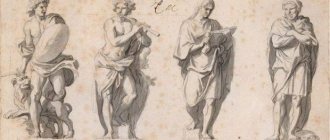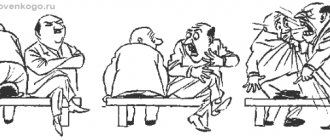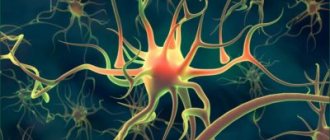Introduction
Needs, interests and ideals, in general, personal relationships determine what a person wants: his abilities - what he can do. But the question still remains about what he is - what are the basic, central, most essential characteristics of a person that determine his appearance and behavior as a whole. It's a question of character. Closely related to a person's direction, a person's character, however, has its own premise of temperament. Temperament and character are different and at the same time closely interrelated. Their scientific research was not accidental, but intersected again and again.
Summary
As noted above, none of the temperament types are either bad or good. In addition, a person cannot belong to only one single type - he can only have a predominant one, and the rest will be complementary. But, be that as it may, from the perspective of psychological science, types of temperament are only one of the ways of psychological assessment of a personality. You should also be aware that descriptions of temperaments may differ from one specialist to another and include many factors.
Concept of human temperament
Temperament is a set of dynamic characteristics of mental processes and behavior. These include reaction speed, individual pace of work, the speed of switching mental processes and motor activity from one activity to another, the speed of a person’s involvement in various types of activities and inhibition. People who react differently—some faster, others slower—to the words and actions of others say they have a different temperament. Of those who move from one activity to another, you are also talking about people with different temperaments. The same applies to individual differences in reaction speed, excitability and emotionality of behavior.
The word "temperament" comes from the Latin "temperament", which means "correct proportion of parts."
This understanding of temperament is due to the fact that in ancient times (in the teachings of the ancient Greek physician Hippocrates - 5th century BC) it was argued that the nature of temperament is determined by the ratio of four types of fluids in the human body:
- Blood,
- Bile,
- black bile,
- Lymphs.
The names of temperaments proposed by Hippocrates still exist: sanguine, choleric, phlegmatic and melancholic.
Characteristics and features of the main psychological types
There are 4 types of higher nervous activity, on the basis of which temperament is formed: weak (melancholic), unrestrained (choleric), lively (sanguine) and calm (phlegmatic).
Sanguine
A sanguine person is characterized by extraversion, an optimal rate of reaction, reduced sensitivity (does not show sensitivity to trifles, is an optimist), good plasticity, high activity, balanced by reactivity. With high performance, he has low fatigue, a lively but not excessive reaction to stimuli, and emotional stability.
Choleric
This type of temperament is characterized by extraversion, strong emotional excitability, rigidity, high rate of reactions, low sensitivity, pronounced reactivity and activity. Moreover, reactivity predominates. Therefore, he is characterized by short temper, lack of patience, imbalance, and emotional instability.
Rigidity prevails over plasticity. Cholerics quickly become exhausted.
Phlegmatic person
Phlegmatic people are characterized by introversion, low sensitivity and emotional excitability. They are calm and have limited facial expressions.
They have a slow pace of reactions, high activity with low reactivity, which allows them to perfectly control their emotions, thoughts and actions. They are characterized by good self-control, restraint, patience, and emotional equanimity.
Melancholic
Melancholic people are characterized by introversion, pronounced sensitivity, high emotional excitability against a background of rigidity, inertia, passivity and low reactivity, depression.
Temperament with such properties is manifested by tearfulness, timidity, touchiness, vulnerability, indecision, cowardice, isolation, self-doubt, inhibited reaction to strong stimuli, low performance and fatigue, unstable attention.
Types of temperament
After Hippocrates, the German philosopher I. Kant named one of the first characteristics of human temperament. A sanguine person, according to Kant, is a person characterized by rapid change from a relatively weak sense of strength. Choleric is a hot, impetuous person. A melancholic person is a person who is characterized by deep and prolonged emotional experiences. A phlegmatic person is a slow, calm person. Over the course of many centuries of his research, temperature consistently correlated with the qualitative characteristics of human blood (I. Kant), then with the structure of the body (E. Krechmer), then with the metabolic processes occurring in the human body. Modern theories of temperament associate it with the structure of the nervous system and its properties. According to I.P. Pavlov, it has the following basic properties: strength, flexibility and balance. Research of recent decades carried out by BM “Thermal”, V.D. Nebylitsyn et al. identified many more characteristics in the central nervous system than Pavlov assumed, so the typology of temperaments based on the characteristics of the nervous system has changed. However, it has been largely preserved in the form that our famous physiologist once proposed.
The strength of the nervous system is characterized by its ability to withstand prolonged and significant loads. The mobility of nervous processes is the speed and other dynamic characteristics of their occurrence and existence. Switchability of nervous processes is characterized by the ability to switch from a state of excitation to a state of inhibition and vice versa. Equilibrium characterizes the relationship between the processes of excitation and inhibition in the nervous system.
A strong, mobile, balanced type of the nervous system, according to Pavlov, is blood-red; a strong, balanced, inert type is a phlegmatic, strong, unbalanced type is choleric; a weak one is melancholic.
This typology was created by I.P. Pavlov based on experimental studies on animals, was based on limited ideas about the properties of the nervous system and therefore was somewhat simplified. This is more consistent with the reality of the typology based on ideas about the properties of the nervous system in the works of scientists.
The blood-red temperament seems to be characteristic of people with a strong, dynamic, balanced and switchable nervous system. Such people remain calm, control the manifestations of their emotionality, and are able to control themselves.
Choleric temperament probably forms a combination of a strong, mobile, dynamic, switchable nervous system with its imbalance, and the process of excitation in such a nervous system clearly dominates the process of inhibition. Externally, choleric behavior is characterized by high activity, speed of movement, quick reaction and increased emotionality. This person has loud speech and sudden movements. Choleric people are rarely calm, and their excitement “excites” others.
A phlegmatic person is a person with a strong, balanced, but sedentary and poorly switchable nervous system. He has a slow reaction from red blood. Outwardly, this person usually appears very calm, reserved, and very difficult to get upset.
Melancholic - has a weak nervous system, it is unstable and unbalanced, inhibitions easily arise in it and excitement dominates. Outwardly, a melancholic person looks like a depressed, constrained person who is almost always in a bad mood. From any sufficiently strong emotional impact, especially in stressful situations, he falls into a state of depression.
The described types of human temperament are rare in the purest form of life. Basically, they are combined with each other, so that the same person finds signs of different types of temperament. One or another type of person is assigned on the basis that his psychology and behavior are dominated by the characteristics of one of the described types. There are many people who cannot be classified into any of the presented temperament types, since they “mixed” the characteristics of the nervous system characteristic of each type.
Essay
“Types of temperaments, their psychological characteristics”
Content
Introduction
1. Concept and types of temperament
2. Natural bases of temperament
2.1 Excursion into history
2.2 Modern idea of the organic basis of temperament
3. Physiological bases of temperament
4. Properties of temperament
5. Temperament and individual style of activity
5.1 The difference between individual style and temperament
5.2 Factors influencing the formation and development of individual style
6. Temperament and character
7. Temperament and communication
Conclusion
List of sources used
Introduction
All people differ in the peculiarities of their behavior: some are active, energetic, emotional, others are slow, calm, imperturbable, some are withdrawn, secretive, sad. One and the same personal property, for example, patriotism, can have different dynamics of expression, from an instant attack on the enemy’s embrasure (the feat of Alexander Matrosov) to many years of methodical activity full of precautions behind enemy lines (Richard Sorge). The set of generalized formal-dynamic properties is called temperament (from the Latin temperamentum - ratio of parts).
History says that the concept of temperament was introduced into scientific circulation by the ancient Greek physician Hippocrates, who lived in the 4th–5th centuries. BC. He also proposed names for the types of human constitution (physique), which later began to be used as modern names for temperament types: sanguine, choleric, phlegmatic, and melancholic. The Hippocratic teaching on temperament was continued by the Roman physician Claudius Galen in the 2nd century. AD, filling the corresponding concepts with content that no longer related to the structure of the body, but actually to the temperament of a person as a property of his soul.
Temperament manifests itself in three spheres of the subject’s mental activity: in the characteristics of general activity, in the motor sphere and in the sphere of emotionality. The first signs of temperament are revealed at the very beginning of a child’s life, when there is still no talk about the meaningful structures of his personality. So A.V. Libin provides data that newborns differ in the degree of general activity (some constantly move, while others lie quietly), in excitability (some scream and cry a lot, vigorously express their needs, while others behave quietly), in the liveliness of their response to new stimuli (toys, faces) and the speed of getting used to them (loss of interest), etc.
Temperament is the only, purely natural personal characteristic of a person, and the reason to consider it a personal characteristic is the fact that the actions and deeds that a person performs depend on temperament.
Dynamic features of behavior are those characteristics that are described in purely physical terms and are not subject to moral and value assessment. The dynamic characteristics of behavior include, for example, the energy inherent in it, with which a person’s performance is associated, the speed and tempo of the movements performed, their general emotional background, as well as the ease and speed of the transition from performing one movement to another.
Let us note that in human behavior, in addition to dynamic aspects, there are also aspects that need and can be assessed in value terms such as: “good - bad”, “moral - immoral”, “decent - dishonest”. Such assessments are not suitable for characterizing temperament; they relate to other aspects of a person’s personality, for example, his abilities, values, needs, character. The only case when temperament can be assessed as good or bad is when it comes to the correspondence of a person’s temperament type to the dynamic requirements of a particular activity.
1. Concept and types of temperament
Temperament is a set of stable, individual, psychophysical properties of a person that determine the dynamic characteristics of his mental processes, mental states and behavior. Let us clarify the above definition of temperament.
The main types of temperament: sanguine, choleric, phlegmatic and melancholic. According to the tradition that has developed over centuries, this is the name given to people with the corresponding types of temperament, and these types themselves would be correctly called sanguine, choleric, phlegmatic and melancholic.
The sanguine type of temperament is characterized by a high pace of activity, moderately fast reactions, fairly high, but not excessive, activity, energy, well-expressed emotionality and balance. Most of the above-mentioned temperament properties in a sanguine person are expressed moderately, averagely or slightly above average.
The choleric type of temperament, in contrast to the sanguine one, is characterized by an extreme degree of expression of many dynamic properties of temperament. A choleric person is a person with very quick reactions, a high pace of activity, rapid mood changes and high switchability from one type of activity to another. A choleric person has strongly expressed emotional reactions, that is, the increased emotional background of activity is quite clearly visible. At the same time, a choleric person is an unbalanced person, with a clear predominance of excitation processes over inhibition processes. This makes him significantly different from a sanguine person.
A phlegmatic person, unlike a choleric person, is a person with slow reactions. He gets into work slowly and leaves it relatively slowly. It moves relatively slowly from one state to another, for example, from a state of rest to a state of excitement, and vice versa. The emotional background of his activity is relatively weakly expressed. But, at the same time, such a person is dynamically balanced, that is, the processes of excitation and inhibition in him proceed, although slowly, but approximately equally in strength and duration.
The melancholic temperament is in many ways similar to the phlegmatic one, with one significant difference from it. A melancholic person is an unbalanced person with a weak nervous system, and in him the processes of inhibition clearly prevail over the processes of excitation. If a choleric person is almost always in a state of increased excitement and increased activity, then a melancholic person, on the contrary, is more often in a state of inhibition and passivity. It is no coincidence that the corresponding psychological state of a person is called melancholy.
2. Natural bases of temperament
2.1 Excursion into history
Claudius Galen believed that a person's temperament is determined by the ratio or mixture of four "juices" in the body: blood, lymph, black bile and yellow bile. The names of temperament types that have survived to this day came from the ancient names of these “juices.” “Sangva” is blood, “hole” is ordinary bile, “melan hole” is dark bile and “phlegm” is lymph. It was believed that the type of human temperament is determined by the type of fluid that predominates in the body.
The idea that a person’s temperament type is determined by the ratio of fluids in the body lasted for quite a long time, until the end of the 19th and beginning of the 20th century, when I.P. Pavlov, having introduced the concept of the basic properties of the human nervous system, hypothesized that it is they, their combination, that determines the type of human temperament.
Pavlov's scientific research is associated with the discovery of the following basic properties of the nervous system: strength - weakness, excitability - inertia and balance. It is characteristic that Pavlov first discovered and described these properties by observing how dogs behave during the development of conditioned reflexes to various stimuli: electric shocks, light and sound influences. Consequently, Pavlov believed that temperament is not a personal property of only a person, but represents the individual physiological characteristics of the activity of any highly developed living organism.
However, this idea is also in the 20th century. did not remain the same as Pavlov expressed it, and was subject to change. It turned out that three properties of the nervous system are not enough to characterize all the features of temperament. Domestic psychologists B.M. Teplov, V.D. Nebylitsyn and V.M. Rusalov proved that the human nervous system has many other properties. They ultimately came to the conclusion that the human nervous system has not three, as Pavlov assumed, but four pairs of basic properties and several more pairs of additional properties. For example, such a property of the nervous system as lability, that is, a rapid response to stimuli, was discovered, as well as its opposite property, called rigidity, a slow response of the nervous system to stimuli.
In addition, research conducted by these scientists discovered that different parts of the nervous system may have different sets of properties. There are, for example, properties related to the entire nervous system as a whole, large blocks of the nervous system, and properties inherent in its small sections or parts, for example, individual nerve cells.
In this regard, the picture of the natural basis of people’s temperament types (while maintaining the conviction that the type of temperament depends on the individual combination of properties of the nervous system) has become much more complex and quite confusing. Unfortunately, it has not yet been possible to fully clarify the situation, but modern scientists still agree on the following.
First of all, they recognize that the type of human temperament is determined not by the combination of those three simple properties of the nervous system that Pavlov spoke about, but by many different properties. Then, they assume that different structures of the human brain, in particular those that are responsible for a given person’s communication with people and for his activity with inanimate objects, may have different sets of properties. It follows that one and the same person may well possess and demonstrate different types of temperament in work and in communicating with people.
But this idea of the organic basis of temperament is likely to change in the coming years, which is associated with advances in human genetics.
2.2 Modern idea of the organic basis of temperament
What is the organic basis of temperament according to modern ideas. Such a basis, apparently, is some features of the human genotype, on which, in turn, the properties of the nervous system depend. Bearing in mind the fact of the existence of the four pairs of properties of the nervous system indicated above: strength - weakness, excitability - inertia, lability - rigidity and balance - imbalance, as well as the fact that their combination determines the type of human temperament, we can assume that the following type temperament corresponds to the following typical combinations of properties of the nervous system:
1. Sanguine – a strong, excitable, labile and balanced nervous system.
2. Choleric is a strong, excitable, labile and unbalanced nervous system, with the dominance of excitation processes over inhibition processes.
3. Phlegmatic – a strong, inert, rigid and balanced nervous system.
4. Melancholic – a weak, inert, rigid and unbalanced nervous system, with inhibition dominating over excitation.
3. Physiological bases of temperament
I.P. Pavlov, studying the work of the cerebral hemispheres, established that all traits of temperament depend on the characteristics of a person’s higher nervous activity. He proved that among representatives of different temperaments, typological differences in the strength, balance and mobility of the processes of excitation and inhibition in the cerebral cortex change.
The strength of nervous processes is the ability of nerve cells to tolerate strong excitation and prolonged inhibition, i.e. endurance and performance of nerve cells. The strength of the nervous process is expressed in the appropriate reaction to strong stimuli: strong stimuli cause strong processes of excitation in a strong nervous system, and weak processes of excitation and inhibition in a weak nervous system.
Balance presupposes a proportional relationship between these nervous processes. The predominance of excitation processes over inhibition processes is expressed in the speed of formation of conditioned reflexes and their slow extinction. The predominance of inhibition processes over excitation is determined by the slow formation of conditioned reflexes and the speed of their extinction.
The mobility of nervous processes is the ability of the nervous system to quickly, in response to the demands of environmental conditions, replace the process of excitation with the process of inhibition and vice versa.
Various relationships between the indicated properties of nervous processes were used as the basis for determining the type of higher nervous activity.
The relationship between these processes is presented in the diagram:
4
3
2
1
Depending on the combination of strength, mobility and balance of the processes of excitation and inhibition I.P. Pavlov identified four types of nervous system, which correspond to four temperaments:
1. Sanguine – strong, balanced, agile.
2. Phlegmatic – strong, balanced, sedentary (inert).
3. Choleric – strong, but unbalanced, with weak inhibitory processes compared to excitation.
4. Melancholic – weak processes of excitation and inhibition.
We all know that people differ from each other in temperament. You can easily determine the temperament of your friends and acquaintances, but determining your own temperament is much more difficult. And this is no coincidence.
Not all people are “pure” representatives of basic temperaments. In life there are many mixed and intermediate types of higher nervous activity, and therefore temperaments. In most cases, there is a combination of features of one temperament with features of another.
4. Properties of temperament
Temperament as a personal characteristic of a person has its own properties. The first property of temperament is the pace of periodic and cyclic movements made by a person when performing a particular activity. Tempo is the number of movements per unit of time: the more such movements, the higher the pace of activity.
The second property of temperament is the speed of external movements or the speed of the internal, psychological processes of a person.
The third property of temperament is switchability. It manifests itself either in the transition from performing one movement to performing another movement, or in switching from one internal process to another, or, finally, in the transition from one psychological state to another. The faster a person makes such transitions, the higher the switchability as a property of temperament. One of the manifestations of this property is the reaction speed, i.e. the speed of a person’s transition from a state of rest (no reaction) to a state of excitement (presence of a reaction).
The fourth property of temperament is activity or energy. It refers to the amount of energy inherent in an action performed by a person, or the amount of energy expended by a person when performing a particular action. Such characteristics of a person as active, passive, energetic, weak, refer to the manifestations of this particular property of temperament.
The fifth property of temperament is the emotional background against which a person’s activity takes place, or, in short, his emotionality. It refers to the strength and variety of a person's typical emotional experiences.
The sixth property of temperament is balance. It is characterized by the relationship between the processes of excitation and inhibition, both in the human nervous system and in his behavior. Accordingly, a person whose processes of excitation and inhibition are approximately equal in strength and duration is called balanced. In this case, excitation is understood as a transition from a state of passivity (rest, inaction) to a state of activity (action, activity), and inhibition is the reverse transition: from a state of excitation to a state of rest. The combination of these properties characterizes a person’s temperament.
5. Temperament and individual style of activity
5.1 The difference between individual style and temperament
What is an individual style of activity? Observations of people's behavior show that the natural type of temperament is not always clearly manifested in their activities, and especially in their social behavior. Culture imposes certain restrictions on human social behavior. In Italian culture, it is allowed to talk loudly, make active body movements and wave your arms when communicating; in English it is forbidden to do this; in Japanese culture it is considered unethical to openly express one's emotions, etc.
Culture, training and upbringing undoubtedly leave a certain imprint on the external manifestations of a person’s temperament. As a result of this, in the dynamic features of human social behavior observed from the outside, we are dealing not with the so-called pure temperament, but with something else, designated as an individual style of activity.
An individual style of activity can be defined in different ways: both relatively independently and in comparison with a person’s temperament. Self-determination of individual activity style is as follows. This is a characteristic way of behavior for a person in typical life situations, which, in turn, can be of two types: activity situations and communication situations.
The definition of an individual style of activity in its comparison with temperament looks somewhat different. In this case, an individual style of activity is understood as the result of an adaptation of a person’s individual type of temperament to the characteristics of his activities and communication with people or to the conditions in which they take place. How does an individual style of activity differ from temperament and what does it have in common with it? An individual style of activity is manifested in all features of human activity, while temperament is manifested only in its dynamic features. For example, an individual style of activity can be manifested in how a person prepares to perform a particular activity, in what order he performs the actions that are associated with this activity, and how he completes and controls the corresponding activity. All this has no direct relation to temperament as such.
The individual style of activity, although it depends on the properties of the human nervous system and, possibly, on the genotype, is not innate. Knowing the properties of the nervous system that a person possesses from birth, it is impossible to predict what his individual style of activity will become.
A person’s individual style of activity can change over the course of life, but temperament does not. For example, if a person chooses a new specialty for himself or enters a job where he is required to have a different style of activity compared to the one to which he is accustomed, then in order to obtain the appropriate specialty and not lose his newly acquired job, the person is forced to change his style of individual activity. It is impossible to change a person's temperament even if one wants to.
The individual style of activity represents mainly external forms of behavior. At the same time, the internal processes taking place in a person may not correspond to his externally observed behavior. In other words, there may be significant differences in the dynamics of internal activity associated with an individual style of activity and in the dynamics of external activity in which this style of activity is expressed.
This is not characteristic of temperament: external and internal types of activity that characterize temperament are identical in their dynamic characteristics. If, for example, a person is choleric or phlegmatic, then his external behavior, his mental processes, and his mental states will have the same, phlegmatic or choleric, properties, respectively.
At the same time, temperament and individual style of human activity are closely related to each other. Their connection is manifested in the following. The individual style of a person’s activity, in its dynamic characteristics, usually corresponds to his temperament. But such a correspondence is not always observed: there may be discrepancies between the dynamic characteristics of temperament and individual style of activity. For example, being a phlegmatic person, a person may be forced to engage in activities, the implementation of which requires from him the dynamic characteristics characteristic of a sanguine person. It also happens the other way around: a sanguine person, while doing something, is forced to behave like a phlegmatic person. In these two cases, a person, while performing the corresponding work, will feel tense and uncomfortable and, most likely, will quickly get tired and make a considerable number of mistakes in his work. If a person’s temperament and individual style of activity correspond to each other, then the person feels quite comfortable in work, receives satisfaction from it and demonstrates increased performance.
An individual style of activity, on the other hand, cannot be completely independent of temperament, and the basic type of temperament that is characteristic of a given person, one way or another, will certainly manifest itself in his individual style of activity. Let us clarify what has been said, remembering that most people have mixed types of temperament, and the type of a person’s temperament is conditionally determined by the dominant properties of the nervous system. This is what is meant when talking about the basic type of temperament of a given person. It is this type that manifests itself in the individual style of human activity.
5.2 Factors influencing the formation and development of individual style
There are several such factors, and they can act, influencing the individual style of activity, at different periods of a person’s life. At a time when a person’s individual style of activity is just beginning to form, it develops both under the influence of the types of activities in which the child is engaged, and under the influence of the child’s observation of the activities of adults and imitation of them. Trying to be like the adults who are significant to him, the child simply imitates them, without thinking or caring at all that his individual style of activity corresponds to the characteristics of his own temperament. And only over time, with the accumulation of life experience, through trial and error, the child comes to the conclusion that the dynamic features of his individual style of activity begin to correspond to the characteristics of his temperament. This usually happens already during school years.
In adults, an individual style of activity develops under the influence of their professional activities, in particular, successes and failures in this activity. Those features of the individual style of activity that lead a person to success in work are reflected and consolidated in the individual style of his activity; those features that give rise to failures, on the contrary, are eliminated over time. The individual style of a person’s activity usually becomes optimal, corresponding to the characteristics of temperament, in adulthood, when a person accumulates quite a lot of life experience and is faced with the task of maximally optimizing his activity, achieving the best results in it with minimal expenditure of energy, effort and time.
6. Temperament and character
Temperament type cannot be “good” or “bad”. Temperament gives uniqueness to a person’s behavior, but in no way determines the motives, actions, beliefs, or moral principles of the individual. One of the psychological books describes a very expressive life situation, revealing the specific behavioral features of representatives of different temperaments.
Four friends are late for the theater.
The choleric man got into an argument with the usher, trying to get into the stalls and take his seat. He assures that the clock in the theater is fast, that he will not disturb anyone, and tries to push aside the usher and slip into his seat.
The sanguine man immediately realized that they wouldn’t let him into the stalls, but it was easier to get to the upper tiers, and he ran up the stairs.
The phlegmatic person, seeing that they were not allowed into the hall, thought: “The first scene of the play is always uninteresting. I’ll go to the buffet for now and wait for intermission.”
Melancholic: “I’m always unlucky. Once again I made it to the theater, and even then unsuccessfully.” And he went home.
A person exhibits the same dynamic characteristics in different situations, but temperament only affects the form of manifestation of character. Thus, persistence in a choleric person is expressed in vigorous activity, in a phlegmatic person - in deep concentration. Each temperament has its positive and negative sides. An example of the valuable properties of a choleric person: passion, activity, energy; sanguine – mobility, liveliness, responsiveness; melancholic – depth and stability of feelings, high sensitivity; phlegmatic – calmness, lack of haste.
But not every choleric person is energetic and not every sanguine person is responsive. These properties must be developed in oneself, and temperament only makes this task easier or more difficult.
B.M. Teplov wrote that with any temperament there is a danger of developing undesirable personality traits. Choleric temperament can provoke a person to lack of restraint, harshness, and a tendency to constant “explosions.” A sanguine temperament can lead a person to be frivolous, prone to scatterbrain, and lacking depth and stability. With a melancholic temperament, a person may develop excessive isolation, a tendency to become completely immersed in his own experiences, and excessive shyness. A phlegmatic temperament can cause a person to be lethargic, inert, and indifferent to the events taking place around him.
The properties of temperament are formed in a person’s activities and are largely determined by the direction of his personality. Based on each temperament, valuable personality traits can be formulated.
7. Temperament and communication
Temperament is closely related to the characteristics of a person’s communication with other people, and therefore, to a large extent determines the psychological compatibility or incompatibility of people.
V.S. Merlin, a prominent Russian psychologist who specifically studies the dynamic characteristics of the human psyche: “Imagine two rivers: one calm, the other fast, mountainous. The flow of the first is barely noticeable, it is smooth, it carries water, it does not have bright splashes, stormy waterfalls, or dazzling splashes. The course of the second is the complete opposite. The river rushes quickly, the water in it rumbles, seethes, bubbles and, hitting the stones, turns into shreds of foam... Something similar can be observed in dynamics (features of the flow of mental life of different people).” It is represented here that both rivers - stormy and calm - flow separately, independently of each other. But in ordinary, everyday life - in the family, at work, during classes at the institute, in the company of friends, etc. there is a merging of a variety of “streams” of the mental life of different people, giving rise to a surge of emotions, waterfalls and whirlpools in human relationships, since each of the “streams” in a common channel strives to preserve its self-worth and originality. From here it is clear how important it is for each of us to know the characteristics of our own temperament and the temperaments of others and take into account each other’s strengths and weaknesses in the process of communication, interaction and relationships.
In interpersonal relationships, conflicts often arise due to the fact that people do not take into account the temperamental characteristics of both their own and the other person, such as impulsiveness, slowness, hot temper, great impressionability, vulnerability, etc. Some temperamental deficiencies can be neutralized by a person in the process of his daily work on himself; Using the characteristics of your temperament, you can achieve significant success in your activities and in improving your own personality.
Conclusion
Summing up the topic “Types of temperament, their psychological characteristics,” we understand that temperament gives originality to a person’s behavior, but in no way determines the motives, actions, beliefs, or moral principles of an individual.
Having considered the very meaning of the word temperament, we can clarify its definition. It talks about the stable psychological properties of a person, on which his behavior depends, and therefore about personal characteristics. The term “psychophysiological” in this case means that the corresponding properties constitute not only part of psychology, but also part of human physiology, that is, they are both psychological and physiological at the same time.
In other words, we are talking about individual human properties, which are more likely to be innate than acquired.
Temperament is the only, purely natural personal characteristic of a person, and the reason to consider it a personal characteristic is the fact that the actions and deeds that a person performs depend on temperament.
Dynamic features of behavior are those characteristics that are described in purely physical terms and are not subject to moral and value assessment. The dynamic characteristics of behavior include, for example, the energy inherent in it, with which a person’s performance is associated, the speed and tempo of the movements performed, their general emotional background, as well as the ease and speed of the transition from performing one movement to another.
From the work I have done, we have learned that there are four types of temperament:
1. Sanguine – strong, balanced, agile.
2. Phlegmatic – strong, balanced, sedentary (inert).
3. Choleric – strong, but unbalanced, with weak inhibitory processes compared to excitation.
4. Melancholic – weak processes of excitation and inhibition.
In the 20th century Much in our ideas about temperament has changed, but much remains the same as it was several centuries ago. What has changed in our understanding of human temperament in the last few decades?
Firstly, in science there has been a clear separation of human temperament and character. Now in most modern textbooks on psychology, and especially in science, temperament and character are considered separately from each other and are interpreted as different characteristics of a person’s personality.
Secondly, psychologists have learned not only to describe types of temperament, but also to diagnose and evaluate them using special tests that were created for this purpose.
Thirdly, the study of temperament types in a large number of modern people has shown that the so-called pure types of temperament corresponding to traditional descriptions are quite rare in life. Such cases account for 25% - 30% of all cases. The remaining 70% - 75% of people have mixed types of temperament, in which the same person exhibits properties inherent in different types of temperament. Moreover, it turned out that about 25% of people cannot be classified as a certain type of temperament at all, since the properties inherent in different types of temperament are variable.
Thus, it turned out that the classification of temperament types that had been established for centuries and seemed unshakable does not more fully correspond to reality and is not fully confirmed by empirical, statistical research.
Fourthly, it was found that the same person can exhibit different types of temperament from time to time, and this depends on what he is doing at a given time. For example, one and the same person can be choleric in communicating with people and at the same time be sanguine in work. Or another, often encountered case: a person may exhibit a phlegmatic temperament at work and a melancholic type of temperament in communicating with people.
Finally, the old ideas about the organic basis of temperament were subjected to serious changes.
Research by psychologists has shown that representatives of different temperaments can achieve equally high success in their activities, but they go to these successes in different ways.
Temperament has nothing to do with the talent and giftedness of people. Among the great people there are bright representatives of all four types of temperaments: I.A. Krylov and M.I. Kutuzov – phlegmatic, A.S. Pushkin and A.V. Suvorov - choleric, M.Yu. Lermontov and A.I. Herzen - sanguine people, poet V.A. Zhukovsky, N.V. Gogol and P.I. Tchaikovsky is melancholic.
List of sources used
1 Nurkova, V.V. Psychology / N.B. Berezanskaya. – 2nd ed. – M., 2008. – 120 p.
2 Dubrovina, I.V. Psychology / E.E. Danilova, A.M. Parishioners. 6th – ed. – M.: Publishing house. , 2007. – 202 p.
3 Nemov R.S. General psychology. Humanitarian edition. center. – M.: Vladivostok, 2001. – 56 p.
4 Psychology and pedagogy: Proc. allowance./ A.A. Rean, N.V. Borovskaya, S.I. Intelligence. – M, St. Petersburg, Voronezh, Minsk, 2008. – 52 p.
5 Martsinkovskaya, T.D. Psychology and pedagogy / A.A. Grigorovich. – M., 2008. -93 p.
6 Podlasy I.P. Pedagogy: New course. – M.: Vladivostok, 2002. – 58 p.
7 Kravchenko A.I.
General psychology: Textbook. allowance. – M., 2008. – 76 p. Tags: Types of temperaments, their psychological characteristics Abstract Psychology
Person's character
Unlike temperament, a person’s character does not refer to external, dynamic behavioral signs, but to the internal, psychological basis of actions; it depends on the person and his personal attitude to what he does. The will and motivation of human behavior is manifested in character. When a person is born with a certain combination of nervous system characteristics, his character is developed in life.
Character is a more detailed description of a person than temperament, which is why the term “character traits” is used to describe character rather than “character traits.” In psychology, a personality trait is called a stable personality trait—a trait that determines a person's actions. The term "property" refers to every particular aspect of human psychology that depends more on style than on the nature of behavior. In essence, people's actions have little to do with their temperament, which is why its characteristics are called traits.
In life, a person’s character is manifested in various activities that give his behavior purposefulness, perseverance and the desire for success (willpower). A person’s character is also manifested in his honesty, responsibility, accuracy (business qualities), openness, sociability, interest and attention to people (communication qualities). These three character traits are the most important.
Individual character traits mean the combination and degree of development of various volitional, business and communication characteristics of a person. Since a person has a whole range of such characteristics, at least several dozen, individual differences in the characters of people are very significant. They are also influenced by the society in which they were born and in which they interacted throughout their lives. Individual differences in character are observed from childhood to the end of early childhood and gradually increase.
Unlike temperament, a person's nature can and does change to a certain extent throughout life. Childhood is the main stage of character formation. It begins to take shape in a person from the first years of his life under the direct influence of parents or their substitutes who raise the child. It depends on the attitude of these people towards the child and how they are treated. If a child is treated well in the first years of his life, then positive character traits are formed in him, and if the treatment is poor, then negative character traits are formed in him. Personality traits such as friendliness, openness, and sociability are usually the result of treating a child well, while personality traits such as anger, withdrawal, and aggressiveness are usually the result of treating a child poorly.
The child develops reactions to adult treatment in the form of stable character traits. Character development is particularly influenced by how the child is treated, causing strong emotions and related to the satisfaction of his most important needs in life. Thus, communication characteristics begin to form. Later, under the influence of the encouragement and punishment the child receives, intentional traits develop. When parents or their surrogates reward and punish and support a child's skillful combination of effort, perseverance, determination and other behavioral qualities, the child develops intentional traits.
The latter begin to acquire entrepreneurial traits in preschool age, and their upbringing depends both on the incentives and punishments they receive, and on the child’s imitation of others. If these people themselves constantly demonstrate good business qualities to the child, then it is reasonable to expect that the same qualities will appear in the child.
A person's character, which is largely developed in childhood, may remain more or less constant or continue to change. Whether he or she will change, and if so, how, depends on various circumstances. First, whether the corresponding character traits were formed in childhood and whether they became sufficiently stable. If they are formed and stabilized, then there is a tendency towards their stability. If they have not yet taken shape, they may change even more.
Secondly, stability of character depends on a person’s attitude towards himself and his environment. If the attitude is positive, this contributes to the rapid stabilization of character. The most significant changes in character are found in cases where the attitude of a person towards himself and his employees towards him is contradictory and unfavorable. With age, from 12 - 15 to 35 - 40 years, a person’s character usually improves slightly, then it stabilizes for 20 years, and at the end of life, after 65 - 70 years, it may deteriorate somewhat again.
Character types
People's characters, like their temperaments, are divided into types, but the classification of characters is very different from the typology of temperaments. When extreme combinations of temperament characteristics are called temperament types, extreme character traits are called accents. This concept comes from the word “accent” - emphasis, emphasis. Character accents are people who have highly developed character traits that go beyond the norm. For example, a person may have strong character traits such as friendliness, sociability, optimism, or the opposite negative traits: aggression, isolation, pessimism. Strictly speaking, almost every person is an accented person in some sense of the word, because at least one of many accented character traits can be found. However, in practice, the concept of “accentuation” is used mainly when a person reveals not one, but several different character traits.
The phenomenon of characteristic accentuation can be temporary (age-related) or permanent. For most people, temporary character accents occur at critical stages of life, during illness, or in difficult, stressful living conditions. The most important periods in a person’s life are the transitional stages from infancy to preschool age (about 3 years), from primary school to adolescence (from 11-12 to 14-15 years), from adolescence to adolescence (18-19 years), from adolescence to adult (35-40 years), from adult to old (after 70 years). A constantly accentuated character is usually observed in people with a difficult childhood.
Society influences a person's character in a certain way. It forms an ideology that contains the desired character traits projected by education that are needed by that society. In ideology they are defined as values and moral norms. By including these values and norms in the state education system, subordinate to the state, as the goals of raising and educating children, they are implemented in the content and methods of raising and educating children. As a result, people grow up with typical traits.
This act is reflected in history and in some social typologies of characters of modern man, such as the typology proposed by the famous American philosopher and psychoanalyst E. Fromm. This is also reflected in numerous examples of difficulties in adapting to a foreign society faced by people who were born and raised in one country, but were forced by adults to emigrate and live in another country.
Here are some examples: The Spartans, military-sports and socio-religious education in Ancient Greece formed a characteristic type - a warrior who believed in the justice of the cause he defended, and an active politician. Another school of education, the Athenians, combined elements of intellectual, moral and aesthetic education, forming rather a characteristic type of scientific-intellectual, educated, cultural person, far from politics and wars.
E. Fromm, after a deep psychological analysis of what the society of developed capitalism and free market relations in the United States in the 1940s and 1950s actually achieved, came to the conclusion that the types of social characters that it created were not particularly attractive . He called them respectively "sadists", "masochists", "conformists" and "hermits" and defined them as follows. These are all losers who blame others for their problems and attack them directly.
“Sadists” are losers who blame others for their problems and direct their aggression against them.
“Masochists” are losers who blame themselves and direct aggression against themselves.
“Conformists” are conscious, unscrupulous conformists who easily and simply change their views as soon as the economic or political situation changes.
“ Hermits ” are those who close themselves and thereby “turn away” from life’s problems, preferring not to solve them, but simply not to perceive them.
American sociologists W. Thomas and F. Znaniecki, in their famous work “The Polish Peasant in Europe and America” (1918-1920), showed how the culture, attitudes and values of people who left their country and were forced to move to another country as adults change. It is noteworthy that, by their nature, at some point they come to an impasse between two cultures, neither completely abandoning the old one nor completely adapting to the new one, i.e. becoming marginalized individuals.
The family, in contrast to society, tends to shape the national, religious, cultural and other characters of a person, rather than general social characters that are considered valuable and useful for the life of a particular social group. These traits can be very different and contradictory.
It is the formation of the family that leads to the most important individual differences in character. This refers to characteristics characteristic of various social groups.
School also has a certain influence on a person's character. School has the greatest influence on the formation of so-called interpersonal character traits, which are associated with business and personal communication between people. Communication with peers and teachers is very important for the development of character in students.
There are some age-related characteristics of character traits. Children under 11-12 years old, teenagers from 11-12 to 14-15 years old, boys and girls from 15-16 to 25-30 years old, adults from 25 to 40-50 years old, from 40-50 to 60-70 years old and over 70 years of age have their own distinctive character.
Methods for studying human temperament and character
To study types of temperament, two groups of methods are used, one of which is based on the study of human actions and reactions (by observation from the outside and by self-assessment), and the other on the psychophysiological study of the characteristics of the nervous system. In the first case, the conclusion about a person’s temperament is based on the extent to which his actions and life reactions correspond to certain standards of actions and reactions associated with various types of temperament. In the second case, conclusions about the subject’s temperament are made based on a comparison of the characteristics of this person’s nervous system with those characteristics that science attributes to a person of a certain type of temperament.
In self-assessment, a person uses the text of a questionnaire offered to him to evaluate his actions and reactions to certain stimuli in typical life situations. If an external assessment is carried out on a person, this is done by qualified specialist observers. The characteristics of the nervous system to determine human temperament are studied using special samples and instruments that accurately record the physiological reactions of the human body in response to certain sensory stimuli.
Only psychological, objective methods are strict enough to clearly judge a person’s temperament, because a person and his environment can make serious mistakes in judging his temperament. The fact that those actions and reactions by which we usually judge a person's temperament is the result of research. They depend on the education and culture of the person. As a result, real, natural temperament may be hidden behind external, ethically justified forms of behavior.
For example, in the traditional culture of peoples living in Southern Europe, it is customary to speak loudly and at the same time gesticulate widely and freely during a conversation. Some peoples living in northern Europe consider the same behavior not entirely cultural. Therefore, southerners may turn out to be people with a predominance of choleric temperament, and northerners - people with a predominance of phlegmatic temperament. Scientific research shows that the distribution of temperaments by type is approximately the same among the peoples of the North and South.










